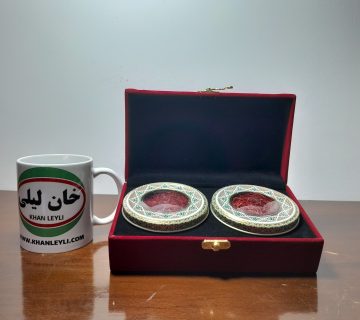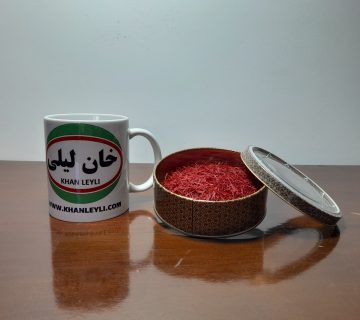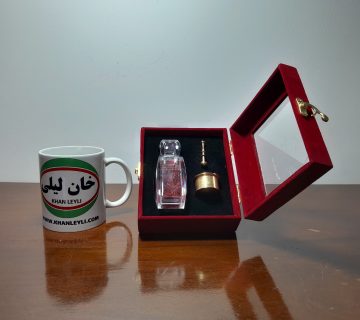Saffron, the precious spice derived from the flower of Crocus sativus, is primarily produced in specific regions known for their favorable climate and soil conditions. Some of the key saffron-producing countries include:
- Iran: Iran is the largest producer of saffron in the world. The country’s saffron is highly regarded for its quality, and Iran accounts for a significant portion of global saffron production. The regions of Khorasan, especially around the city of Mashhad, are known for cultivating some of the finest saffron varieties.
- India: India is a major saffron producer, with the majority of cultivation concentrated in the region of Jammu and Kashmir. The saffron produced in Pampore, a town in the Kashmir Valley, is particularly famous for its unique flavor and aroma. Indian saffron is often used in traditional Indian cuisine.
- Spain: Spain, particularly the La Mancha region, is renowned for its high-quality saffron. Spanish saffron is characterized by its vibrant red color and strong aroma. La Mancha saffron, often referred to as “red gold,” is a key ingredient in Spanish dishes like paella.
- Greece: The Kozani region in Greece is known for cultivating saffron, particularly around the town of Krokos. Greek saffron, often labeled as “Krokos Kozanis,” has a distinct flavor and is protected by a designation of origin.
- Morocco: Morocco is also a notable producer of saffron, and the spice is cultivated in regions with suitable climate conditions. Moroccan saffron is utilized in traditional dishes and is appreciated for its quality.
- Afghanistan: Afghanistan has become a significant player in the saffron market, with increasing cultivation in various provinces. Afghan saffron is known for its unique flavor and fragrance.
- Italy: Italy, particularly the Abruzzo region, produces saffron, often labeled as “L’Aquila saffron.” Italian saffron is used in various culinary applications, adding its distinct touch to Italian dishes.
- Azerbaijan: Saffron is cultivated in parts of Azerbaijan, contributing to the global saffron market. Azerbaijani saffron is recognized for its quality and is used both domestically and in international trade.
It’s important to note that while these countries are major producers, saffron cultivation is also carried out on a smaller scale in various other regions worldwide, including parts of the United States, Switzerland, and New Zealand. However, the bulk of global saffron production is concentrated in the countries mentioned above.
Saffron Sovereignty: Unveiling the Quest for the World’s Finest Strands
In the realm of spices, none commands as much reverence as saffron, the golden treasure derived from the crimson stigmas of the Crocus sativus flower. In the pursuit of culinary excellence and sensory indulgence, chefs, connoisseurs, and spice enthusiasts embark on a quest for the world’s finest saffron strands. “Saffron Sovereignty” represents not just a spice, but an exquisite journey into the heart of cultivation, culture, and the pursuit of perfection.
Saffron has transcended its role as a mere spice; it is an embodiment of luxury, sophistication, and culinary artistry. The quest for the finest saffron strands begins with an appreciation of the rich hues, potent aromas, and nuanced flavors that distinguish the best from the rest. The allure of these golden threads extends beyond the kitchen, weaving its way into cultural traditions, rituals, and even medicinal practices in some regions.
At the epicenter of saffron sovereignty is Iran, hailed as the unrivaled producer of the world’s finest saffron. The sprawling saffron fields of Khorasan, especially around Mashhad, yield strands known for their exceptional length, intense color, and complex flavor profiles. Iranian saffron, whether the Super Negin, Sargol, or Pushal varieties, is a testament to centuries-old cultivation techniques and a climate that nurtures the saffron crocus with unparalleled care.
In the northern reaches of India, specifically in the Kashmir Valley around Pampore, saffron cultivation reaches another pinnacle. The Mogra and Lacha varieties from this region are celebrated for their distinctive characteristics. Indian saffron carries the essence of the Himalayas, offering a robust flavor and a deep, earthy aroma. As chefs globally seek diversity in saffron profiles, Indian saffron emerges as an opulent choice in the pursuit of culinary excellence.
The arid plains of La Mancha in Spain are adorned with the golden blooms of the saffron crocus, creating a spectacle that heralds the region’s saffron artistry. La Mancha saffron, often referred to as “red gold,” captivates with its vibrant color and rich fragrance. The meticulous harvesting and processing techniques in this region contribute to the spice’s esteemed reputation, making Spanish saffron an indispensable ingredient in the world’s most exquisite dishes.
As chefs and saffron enthusiasts embark on the quest for the world’s finest strands, they navigate through the intricacies of authenticity, purity, and terroir. The journey involves discerning palates seeking the perfect balance of flavor notes, visual vibrancy, and aromatic complexity. The pursuit of saffron sovereignty is not just about acquiring a spice; it is a dedication to the culinary arts and an homage to the regions that have mastered the cultivation of this precious commodity.
In conclusion, “Saffron Sovereignty: Unveiling the Quest for the World’s Finest Strands” is an odyssey into the heart of saffron cultivation, where each strand is a testament to the dedication, expertise, and cultural heritage of its origin. As the quest continues, saffron sovereignty remains a celebration of the sensory wonders that emerge from the meticulous cultivation and careful harvesting of the world’s most coveted spice.
Saffron Capitals: A Global Tour of the World’s Premier Producers
In the realm of spice, saffron reigns supreme, its vibrant hues and exotic fragrance elevating it to the status of a culinary gem. As we embark on a global tour of the world’s premier saffron producers, we unveil the unique flavors, cultural significance, and agricultural mastery that define saffron capitals across the globe.
Our journey commences in Iran, the uncontested saffron capital of the world. Nestled within the vast expanses of Khorasan, particularly around Mashhad, the saffron fields stretch like golden carpets. Iranian saffron, renowned for its deep red stigmas and robust aroma, stands as a testament to centuries-old traditions. The Super Negin variety, with its elongated threads, captivates chefs and connoisseurs alike. In Iran, saffron is not just a spice; it is a cultural cornerstone, woven into the fabric of daily life, culinary traditions, and symbolic rituals.
As we traverse the globe, our next stop is Pampore in the Kashmir Valley, India. Here, saffron cultivation unfolds against the backdrop of the majestic Himalayas. The Mogra and Lacha varieties, with their unique characteristics, showcase the diverse profiles that saffron can embody. Indian saffron, with its earthy undertones and aromatic richness, adds a touch of elegance to traditional dishes. Beyond its culinary role, saffron from Pampore is intricately connected to cultural practices, from celebratory feasts to spiritual offerings.
Our journey continues to the sun-drenched plains of La Mancha, Spain, where saffron is hailed as “red gold.” The vibrancy of La Mancha saffron, with its intense color and floral notes, is a testament to the meticulous harvesting practices in the region. Spanish saffron finds its place in iconic dishes like paella, embodying the essence of Mediterranean cuisine. La Mancha’s saffron legacy extends beyond culinary applications, contributing to the region’s cultural identity and economic vitality.
Venturing into the heart of Greece, we explore the Kozani region, home to the coveted Krokos Kozanis saffron. Greek saffron, protected by a designation of origin, carries the spirit of tradition and centuries-old cultivation methods. Its distinct flavor and aroma make it a sought-after ingredient in both Greek and international cuisines. As we traverse the landscapes of Greece, we witness saffron’s role in local festivities, weaving itself into the tapestry of regional customs.
Our global saffron tour concludes in Morocco, a country where saffron cultivation adds a unique layer to its diverse culinary landscape. Morocco’s saffron, known for its warm and aromatic profile, graces dishes like tagines and couscous. The spice’s presence in Moroccan markets and kitchens reflects not only its culinary importance but also its role in the country’s cultural heritage and trade history.
Cultivating Elegance: The Saffron Story in Iran, Greece, and Afghanistan
In the delicate petals of Crocus sativus blooms a story of elegance, whispered by the golden threads of saffron. Across the landscapes of Iran, Greece, and Afghanistan, the cultivation of saffron transcends a mere agricultural practice – it becomes an art form, a cultural heritage, and a pursuit of elegance that enriches both the spice itself and the lives of those who cultivate it.
Our journey begins in the sun-drenched fields of Khorasan, Iran – the heartland of saffron cultivation. Here, saffron is not merely a spice; it is a symphony of color, fragrance, and flavor. The meticulous cultivation and harvesting methods, passed down through generations, yield strands that embody the essence of luxury. Iranian saffron, with its Super Negin, Sargol, and Pushal varieties, is celebrated for its deep red hues, intense aroma, and nuanced taste. In Iran, the saffron story unfolds not just in the fields but in the kitchens, ceremonies, and artistic expressions that honor this golden treasure.
As we journey westward, the Kozani region in Greece unfolds like a canvas painted with the vibrant colors of Krokos Kozanis saffron. Protected by a designation of origin, Greek saffron carries a legacy of elegance that traces its roots to ancient times. The Aegean breeze whispers through the saffron fields, where meticulous cultivation and traditional methods contribute to the spice’s unique flavor profile. In Greece, saffron becomes a symbol of elegance, weaving itself into local dishes, festivals, and the spirit of community.
Our exploration takes us to the rugged landscapes of Afghanistan, where saffron cultivation emerges as a tale of resilience and elegance. Despite challenges posed by conflict and terrain, Afghan saffron has carved a niche for itself in the global market. The spice, with its unique flavor and fragrance, reflects the determination and dedication of Afghan farmers. Saffron cultivation becomes a source of hope and economic empowerment, adding an element of elegance to the narratives of Afghan communities.
While each region contributes its unique touch to the saffron story, common threads of cultural significance and global presence unite these distant lands. In Iran, saffron is intricately woven into Persian culture, from culinary traditions to art and poetry. In Greece, the cultivation of Krokos Kozanis saffron is a testament to the region’s cultural heritage. In Afghanistan, saffron becomes a symbol of hope and a pathway to economic prosperity.
In conclusion, “Cultivating Elegance: The Saffron Story in Iran, Greece, and Afghanistan” is an exploration of the refined artistry and cultural significance embedded in the cultivation of saffron across diverse landscapes. As the golden threads dance in the breeze of Khorasan, the Aegean, and the Afghan fields, they tell a story of elegance, resilience, and the timeless allure of this precious spice. In each region, saffron not only graces dishes with its distinct flavor but also adds a touch of elegance to the lives and traditions of those who cultivate it.








No comment